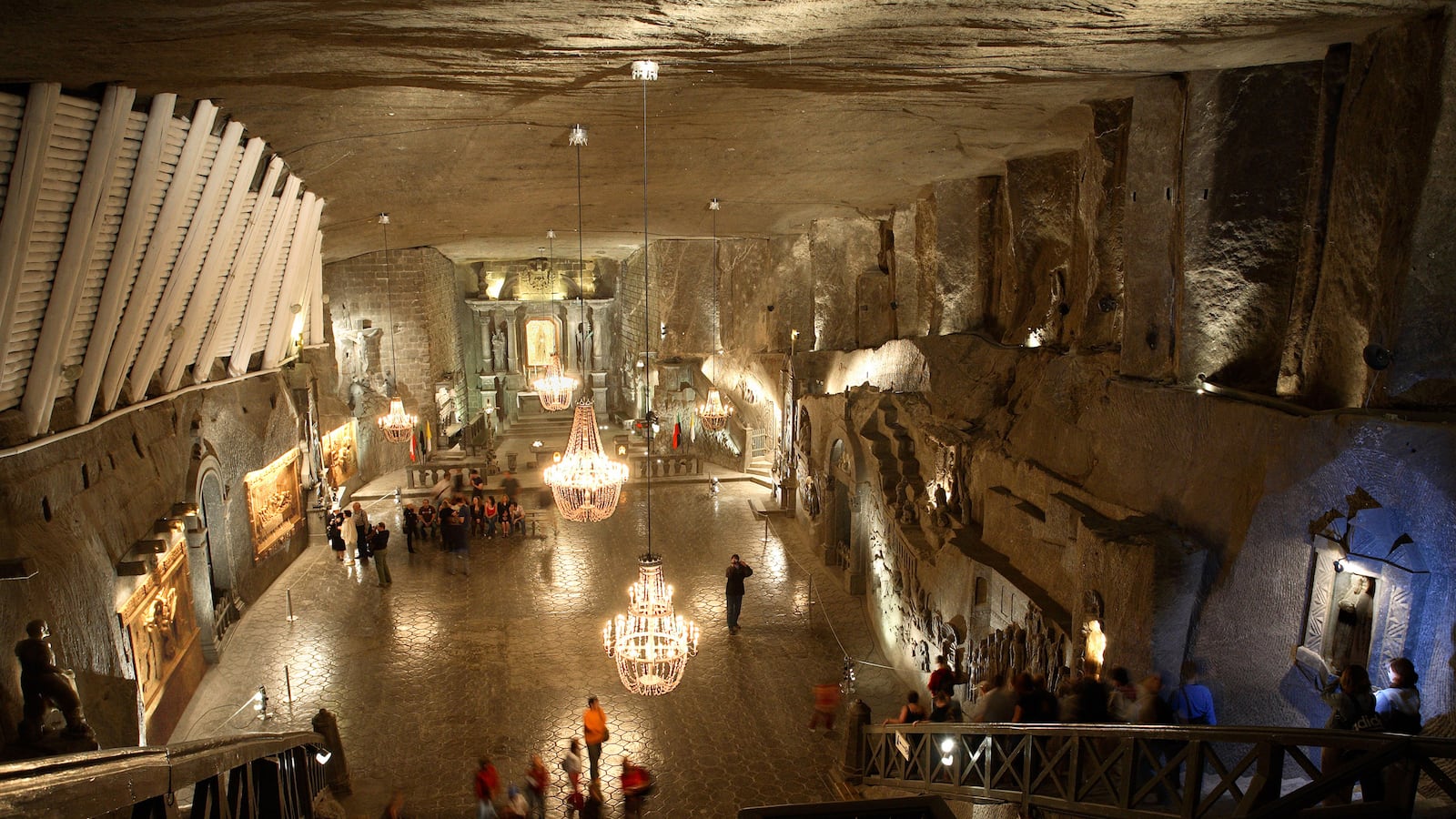More than 1,000 feet underground in Poland, seemingly impossible things are happening. Hot-air balloons have been launched. A bungee jumper has taken the plunge. A windsurfer has been propelled across still saltwater. A brass band has bellowed on its instruments.

Stretching nine levels beneath the earth, Poland’s Wieliczka Salt Mine is roomy enough to fit the Eiffel Tower and then some. For centuries, miners have been carving out spectacular chapels and sculptures of the country’s most beloved figures underground, not far from the medieval city of Krakow. And in the past half century, as salt mining slowed and then halted, and tourists began arriving, the cavernous chambers have been transformed into an incredible underground amusement park of grand halls, health spas, museum-worthy art, and record-setting spectacles.
The descent into the chilly salt mine caves is 800 steps down the shafts. But the winding venture is worth the trek. Hundreds of years of excavation has left seven gorgeous chambers carved into the salt rock throughout the floors. Today they host hundreds of guests at weddings, business meetings, concerts, fashion shows, and galas.
The uniqueness of the underground space attracts a variety of thrill seekers. In the largest room accessible to visitors, with a soaring, 100-foot ceiling, the first ever underground balloon flight took place. The mine’s large underground lake once was an unlikely playground for an adventurous windsurfer, who glided along the water propelled by a giant fan. Even the chandeliers casting a golden glow on many of the rooms are made from rock salt.
Wieliczka is one of the world’s oldest salt mines still in operation, though it stopped producing table salt in 2007. Records of extraction of the element reach back to the 12th century. Just over 100 years later, documents show miners building salt snowmen in the mine. (The practice was barred in 1876.) Today, statues carved by generations of self-taught sculptors are scattered throughout the cavernous rooms. The largest of those statutes is carved out of the weight equivalent of three elephants worth of salt.
Devout miners working in dangerous conditions dedicated themselves to building four chapels in the mine. The oldest is nearly 400 years old. Miners started carving out the most spectacular, the Chapel of Saint Kinga, in 1896. Over the next 70 years, they created the largest of the mine’s churches. Its walls are filled with religious bas-reliefs, including a replica of Da Vinci’s “The Last Supper” carved into the rock salt. Life-size sculptures of Poland’s most important figures are carved in detail, and a statue of the country’s holiest son, Pope John Paul II, hovers over the room on a pedestal, draped in papal robes. Even the altar is an intricately carved block of salt. But the salt-rock statues are not all religious depictions: one whimsical cave depicts Snow White’s seven dwarves, carved entirely from salt, hauling salt from the site.
The mine even boasts its own brass band. With 183 years of history, the Wieliczka Salt Mine Representative Brass Band claims to be Europe’s oldest and plays at all the religious holidays in the underground chapel, as well as at funerals of miners.
For visitors exhausted by those first 800 steps underground, a health resort capitalizes on the allure of allergen- and pollution-free air available hundreds of feet underground. It has even pioneered a treatment called “subterranotherapy,” which offers rehabilitation programs for people suffering from respiratory problems. Those truly enamored with cave life can stay overnight as part of a group, though they need to bring their own sleeping bag. Tours for school groups offer activities such as tennis, a reading room, and dancing at a disco.
There’s underground partying to be had for adults, as well. On December 31 this year, an ’80s-themed party will ring in 2014 with live music, a DJ, and the promise of many shoulder-padded costumes. Who needs sunlight when the underworld is this enticing?






